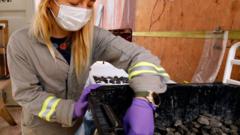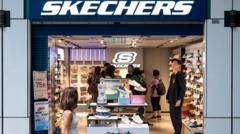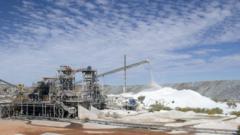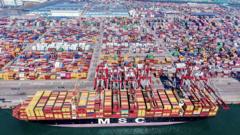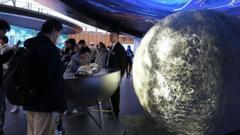As the world of robotics continues to evolve, the competition to create advanced humanoid robots has entered a critical phase. Notably, at the Hannover Messe in Germany, the G1 by Chinese company Unitree showcased its impressive dexterity and affordability, captivating attendees. With the potential to serve in numerous sectors, from manufacturing to personal assistance, the quest for powerful humanoid robots is set against the backdrop of varying development capacities across nations.
Race for Humanoid Robots Heats Up: Who Will Prevail?

Race for Humanoid Robots Heats Up: Who Will Prevail?
The global race to develop humanoid robots intensifies, with companies like Unitree and Tesla leading the charge amidst significant technological challenges.
The G1 stands at 4'3" tall and has quickly gained attention for its fluid movements. According to Unitree, the G1's autonomous functions require precise programming by users. As it engages with curious onlookers, the G1 manages to invoke laughter and curiosity—an effect not common with many robots. However, the technology is not without its obstacles; significant advancements in artificial intelligence are still required to enable humanoid machines to perform complex tasks in unpredictable environments such as homes or restaurants.
The landscape of humanoid robotics includes major players like Tesla, which is working on its own robot, Optimus, expected to assist in its factories. Concurrently, other automakers like BMW and Hyundai are investing heavily in humanoid technology. Researcher Thomas Andersson emphasizes that Chinese companies like Unitree are likely to dominate this field due to a robust supply chain and substantial government support. Approximately 60% of funding for humanoid robotics is currently sourced from Asia.
In contrast, European and American developers face challenges competing with low-cost production strategies found in Asia. For instance, Bren Pierce, founder of the robotics firm Kinisi, has redirected manufacturing to Asia to reduce costs while designed simpler robots for warehouse functions, eliminating the need for human-like forms.
Despite the excitement, industry leaders acknowledge that true humanoid robots capable of household tasks remain a distant reality, projected to take at least another decade to materialize fully. As investments and developments continue to flow into this critical sector, the outcome of the humanoid robotics race remains to be seen.
The landscape of humanoid robotics includes major players like Tesla, which is working on its own robot, Optimus, expected to assist in its factories. Concurrently, other automakers like BMW and Hyundai are investing heavily in humanoid technology. Researcher Thomas Andersson emphasizes that Chinese companies like Unitree are likely to dominate this field due to a robust supply chain and substantial government support. Approximately 60% of funding for humanoid robotics is currently sourced from Asia.
In contrast, European and American developers face challenges competing with low-cost production strategies found in Asia. For instance, Bren Pierce, founder of the robotics firm Kinisi, has redirected manufacturing to Asia to reduce costs while designed simpler robots for warehouse functions, eliminating the need for human-like forms.
Despite the excitement, industry leaders acknowledge that true humanoid robots capable of household tasks remain a distant reality, projected to take at least another decade to materialize fully. As investments and developments continue to flow into this critical sector, the outcome of the humanoid robotics race remains to be seen.





